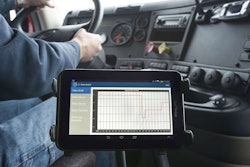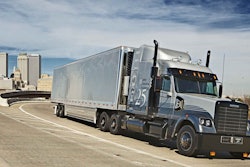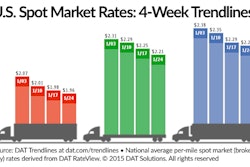Electronic logging devices (ELDs) can be a delicate issue for fleets that use the owner-operator business model.
Last year, research by CCJ’s sister publication, Overdrive, found that independent operators are strongly opposed to the technology. Seventy percent said they would go so far as quit the industry before using ELDs.
What remains to be seen is how long the animosity will remain. The Federal Motor Carrier Safety Administration will mandate the use of ELDs when it publishes a final rule later this year. Fleets and drivers will then have a two-year window to implement ELDs before enforcement of the mandate begins, presumably by the end of 2017.
Traditionally, fleets have used in-cab systems to deploy electronic logs. Company and leased drivers would use these corporate devices for work-related duties but for nothing else. By contrast, fleets can now deploy electronic logs on consumer platforms like smartphones and tablets to create a different vibe. In many cases, drivers have already installed these apps themselves, for free.
Free electronic logging applications from the Google Play and App Store are an easy entry point, with the caveat being that drivers will need to have a printer in the cab to create a paper copy of logs for law enforcement. Fleets and drivers that use these apps will also need to upgrade to an ELD-compliant device in the near future.
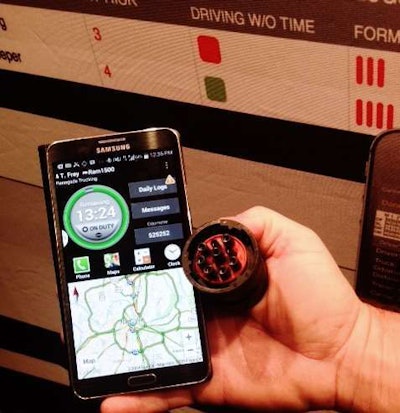 BigRoad has released a new Dashlink option for its electronic logging application.
BigRoad has released a new Dashlink option for its electronic logging application.Diamond Coach Leasing operates a fleet of luxury buses for clients in the music entertainment industry. All 94 drivers for the Nashville, Tenn.-based company are owner operators.
When looking to make the transition to electronic logs, Sarah Beth Imperi, the fleet’s safety director, put a premium on ease of use. Two of the fleet’s drivers were already using a free application from BigRoad. After gathering input from the drivers and from the National Association of Small Trucking Companies, Diamond Coach Leasing decided to implement BigRoad fleet wide.
“Once I saw the application from a driver’s perspective, I knew it was very easy to work with,” she says.
Diamond Coach Leasing requires drivers to get their own printers. The company pays BigRoad a monthly fee of $15 per user for online access to driver log data through BigRoad’s Web-based dashboard.
The fleet plans to upgrade to BigRoad’s new ELD option, called DashLink. This device plugs into the vehicle diagnostics port to work like other ELD applications in the market today; it records truck and odometer values automatically for an accurate record of driving time. When DashLink is used, drivers do not need a printer.
For Diamond Coach Leasing, the return on investment for upgrading will be to accurately track drivers’ state-by-state mileage for IFTA reporting, Imperi says. Right now, drivers are still doing paper reports for every trip.
Extended mobility
Extending the range of mobility is another advantage of deploying ELDs to tablets and smartphones. The ELD application stays with the driver, inside and outside the vehicle. This helps keep their duty status up to date as well as giving drivers additional business applications to plan their schedules and routes.
Bennett International Group has an owner-operator fleet of 2,600 drivers with a diversified set of services for customers with truckload, flatbed, oversized and specialty freight. It also offers a “Driveaway” service where it provides drivers to customers who need one-way equipment moves.
In early 2014, Bennett wanted to extend electronic logs and other fleet management applications to an Android platform it had developed for drivers. The company was planning to replace its traditional in-cab system with Samsung Android tablets and AT&T wireless service.
The company created custom apps for drivers to submit paperwork and find loads. Drivers also use its apps to stay connected to the fleet to improve the efficiency of operations, increase safety and save fuel.
“The main thing is we wanted to get a mobile computer in drivers’ hands. That is very important for us,” says Tim Hadden, chief information officer. “We put as much technology in drivers’ hands as possible.”
Staying connected with vehicles independent of the tablet was also one of its requirements. Bennett found such a system in the HD-100 from Rand McNally.
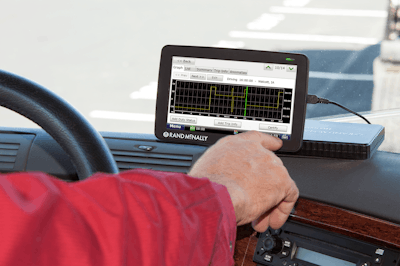 With the HD-100 from Rand McNally, Bennett International Group has deployed electronic logs on Android tablets.
With the HD-100 from Rand McNally, Bennett International Group has deployed electronic logs on Android tablets.The HD-100 is a small, wallet-sized device that plugs into the vehicle’s diagnostics port. The HD-100 can be installed by drivers in less than 15 minutes and is synchronized via Wi-fi with Bennett’s Android tablets to provide immediate communications, vehicle location, load data delivery, driver performance, engine data, and electronic Hours of Service logs.
Bennett has its Rand McNally applications completely integrated with its transportation and safety management systems through Web services. Bennett plans to add Rand McNally’s IntelliRoute turn-by-turn directions and mapping, with truck-specific routing.
Bennett, headquartered in McDonough, Ga., has deployed about 300 HD-100 systems in the last 6 months and plans on deploying another 300 to 400 every six months until its entire 2,600-truck fleet is complete, Hadden says.
The HD-100 is cheaper than almost any other solution on the market, he says. “We found a few that were cheaper, but for the tools they are offering, the (HD-100) is more efficient with more advanced technology.”
Bennett allows drivers to use their own devices and gives drivers a monthly credit for doing so. About 10 percent of drivers use this option, he says.
“Right now it is about getting a technology advantage. We feel like we have the best technology for owner operators inside the truck,” he says.
Next week, be on the lookout for a more comprehensive article from CCJ to help you navigate the universe of electronic logs to stay ahead of the looming ELD mandate and maximize return on investment from this technology.


